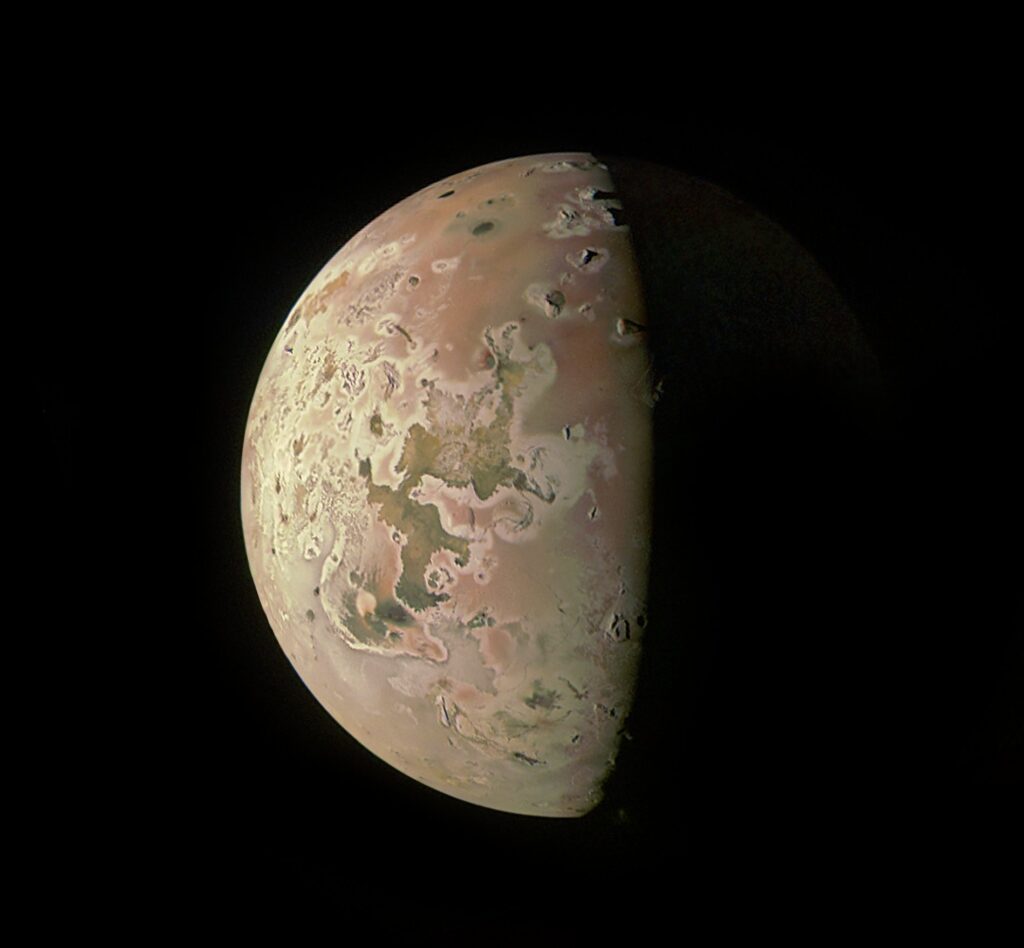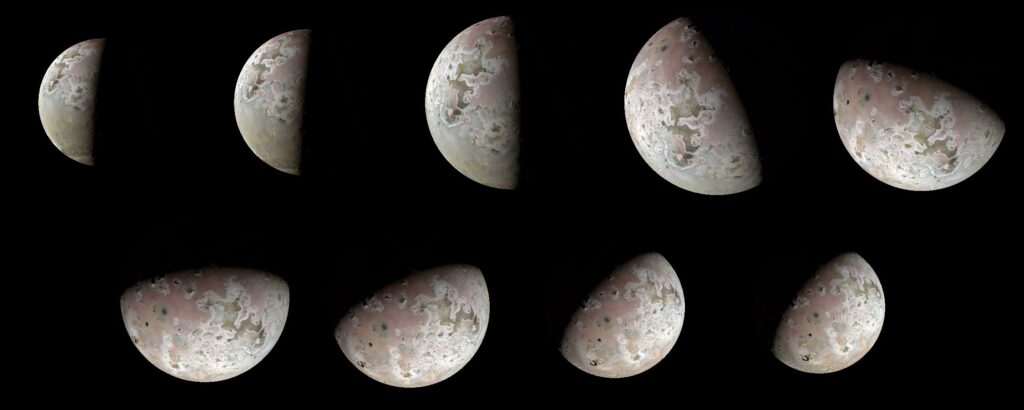On October 15, the Juno spacecraft made a record flight of the volcanic moon Io. It passed at a distance of only 11,700 km from its surface.

The last flyby was the closest visit of an Earth Messenger to Io since 2001, when the Galileo spacecraft visited it. The images taken by Juno demonstrate how much this moon differs from other moons of the planets. There are practically no impact craters on its surface, although it has a unique color. There you can find shades of white, red, black, green and yellow. Such a motley color scheme, because of which the moon is sometimes compared to pizza, is explained by the consequences of constant eruptions. Volcanic eruptions covered Io’s surface with numerous sulfur compounds and silicates.
The incessant eruptions also explain why there are practically no craters on Io. Their traces quickly disappear under a layer of volcanic deposits. Instead of shock formations, viscous lava flows can be found on the surface of the moon, the length of which can be measured in hundreds of kilometers, lakes of molten sulfur, as well as calderas several kilometers deep.

It is worth noting that this is not Juno’s first visit to Io. Earlier, the spacecraft performed several overflights of the moon, although the minimum approach distance was greater. These visits became possible thanks to the extension of the Juno mission, during which it first got the opportunity to visit Ganymede, then Europa, and now Io.
Already at the end of December this year, Juno will get closer to Io again. This time, the spacecraft will fly at an altitude of only a few hundred kilometers from its surface, which will allow us to collect additional data about this unique world and take even more spectacular pictures.
Follow us on Twitter to get the most interesting space news in time
https://twitter.com/ust_magazine
